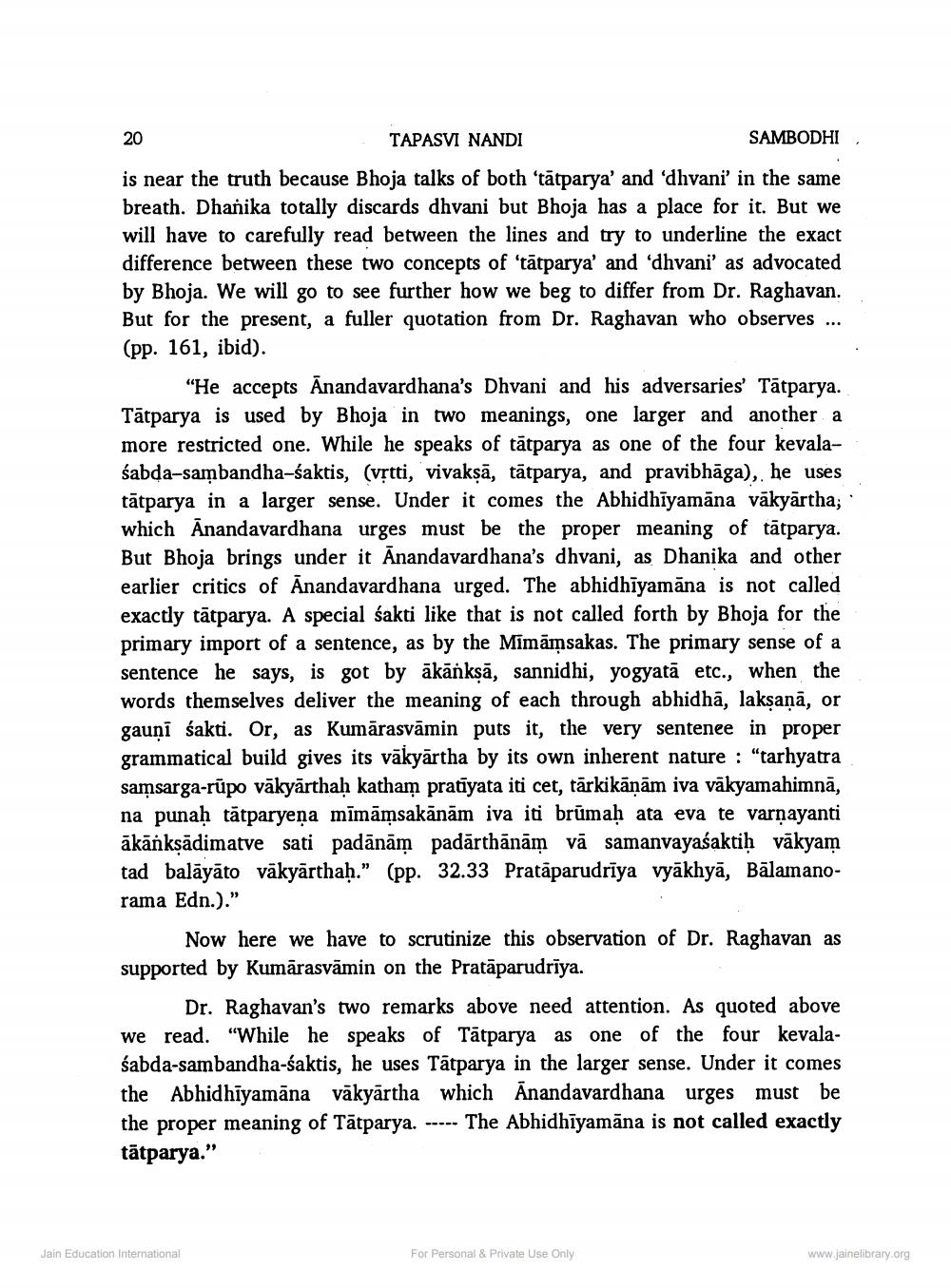________________
20
TAPASVI NANDI
SAMBODHI is near the truth because Bhoja talks of both 'tātparya' and 'dhvani' in the same breath. Dhanika totally discards dhvani but Bhoja has a place for it. But we will have to carefully read between the lines and try to underline the exact difference between these two concepts of 'tātparya' and 'dhvani' as advocated by Bhoja. We will go to see further how we beg to differ from Dr. Raghavan. But for the present, a fuller quotation from Dr. Raghavan who observes ... (pp. 161, ibid).
"He accepts Anandavardhana's Dhvani and his adversaries' Tātparya. Tātparya is used by Bhoja in two meanings, one larger and another a more restricted one. While he speaks of tātparya as one of the four kevalaśabda-sambandha-śaktis, (vrtti, vivaksā, tātparya, and pravibhāga), he uses tātparya in a larger sense. Under it comes the Abhidhiyamāna vākyārtha; which Anandavardhana urges must be the proper meaning of tātparya. But Bhoja brings under it Ānandavardhana's dhvani, as Dhanika and other earlier critics of Anandavardhana urged. The abhidhīyamāna is not called exactly tātparya. A special sakti like that is not called forth by Bhoja for the primary import of a sentence, as by the Mimāmsakas. The primary sense of a sentence he says, is got by ākānkṣā, sannidhi, yogyatā etc., when the words themselves deliver the meaning of each through abhidhā, laksaņā, or gauni sakti. Or, as Kumārasvāmin puts it, the very sentenee in proper grammatical build gives its vākyārtha by its own inherent nature : "tarhyatra samsarga-rūpo vākyārthaḥ katham pratīyata iti cet, tārkikāņām iva vākyamahimnā, na punaḥ tātparyeņa mīmāmsakānām iva iti brūmah ata eva te varnayanti ākānkṣādimatve sati padānām padārthānām vā samanvayaśaktiḥ vākyam tad balāyāto väkyärthah." (pp. 32.33 Pratāparudrīya vyākhyā, Bālamanorama Edn.)."
Now here we have to scrutinize this observation of Dr. Raghavan as supported by Kumārasvāmin on the Pratāparudriya.
Dr. Raghavan's two remarks above need attention. As quoted above we read. "While he speaks of Tātparya as one of the four kevalasabda-sambandha-śaktis, he uses Tātparya in the larger sense. Under it comes the Abhidhiyamāna vākyārtha which Anandavardhana urges must be the proper meaning of Tātparya. ----- The Abhidhīyamāna is not called exactly tātparya."
Jain Education International
For Personal & Private Use Only
www.jainelibrary.org




